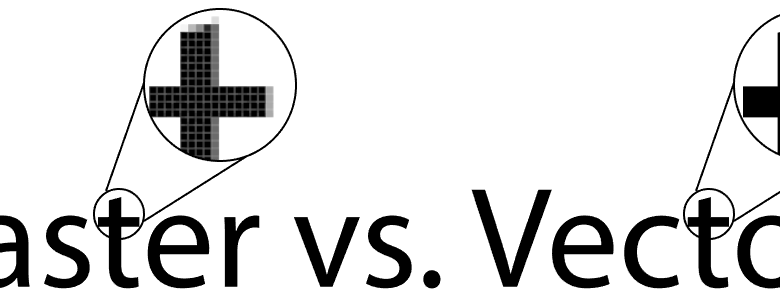- December 20, 2022
- Posted by: Andrew
- Category: Uncategorized

Embroidery digitizing has become a popular way to replicate custom designs on fabric. But what exactly is the difference between raster and vector in this process?
This article will explain the key distinctions between these two types of embroidery digitizing, helping you understand which one works best for your project.
Raster and vector refer to different graphic formats used in computer-aided design, both of which can be used for embroidery digitizing.
Raster vs Vector
Raster and Vector are two commonly used formats for computerised embroidery. But what distinguishes them from each other?
To understand the differences between these formats, it helps to break down the essential characteristics of each.
Raster images are composed of pixels, which are tiny squares that make up a larger image when viewed from a distance.
This format is best used for photographs or complex designs with many colours since it can accommodate images with an infinite range of shades and tones.
However, raster images cannot be scaled up in size without losing quality as pixels become more visible when enlarged.
Vector images, on the other hand, use mathematical equations to create shapes and lines that can be edited without any loss in clarity regardless of how much they’re enlarged or stretched out.
Difference in Structure
When creating an embroidery design, there are two main types of graphics to choose from. They are the raster and vector formats.
The primary difference between raster and vector images is in their structure. Raster images are made up of tiny pixels that form a grid pattern on the screen or fabric when viewed at a distance.
Vector images, on the other hand, are composed of mathematical curves and points that remain sharp regardless of how far away it is viewed from.
Applications of Raster
Raster is a popular form of digital imaging used for many different applications, most notably in embroidery.
It is especially useful when working with detailed designs that have multiple colours and intricate patterns. Raster differs from vector images in the way it stores information, which makes it an ideal choice for embroidery projects.
Raster technology breaks down an image into a series of tiny squares called pixels. Each pixel contains information about its colour and position within the image, allowing it to be reproduced accurately when printed out or displayed on a computer screen.
This makes raster images well-suited to complicated embroidery designs that require precise details and colours. The small size of each pixel also means that complex patterns can be produced quickly and efficiently without compromising on quality or accuracy.
Benefits of Vector
Vector graphics provide users with an incredibly versatile and high-quality image format. Vector images are preferred by many professionals in the embroidery industry because they offer a number of advantages over traditional raster images.
Here are some of the primary benefits that distinguish vector from its raster counterparts in embroidery:
First, vector images offer exceptional scalability. Unlike raster images, which can become distorted when enlarged or reduced in size, vectors remain sharp and clear no matter how much you scale them up or down.
This makes vector images ideal for embroidery design since it allows you to accurately replicate intricate details on a wide range of fabrics and materials.
Second, vector graphics are composed of mathematical equations instead of pixels like their raster counterparts.
Limitations of Raster
Raster imaging is a common choice for embroidery as it makes detail-rich designs possible. However, just like all other technologies, there are certain limitations to using raster in embroidery. Knowing these limitations can help you decide whether raster or vector is the right option for your project.
Raster images are made up of tiny pixels that distinguish them from vectors which store shapes and lines. These pixels give raster more flexibility than vector in terms of detail and colour gradients, but they also have some drawbacks when used in embroidery projects.
Embroidering a design with a lot of small details can make the finished product look pixelated or blurry due to the size of the stitches used by most machines.
Limitations of Vector
Vector graphics are composed of mathematical equations rather than individual points or pixels. This makes them ideal for producing sharp lines and intricate details that can be accurately transferred onto fabric.
Vector images also allow for faster production because the files used to create the design can be scaled up or down with no loss in quality. However, since they rely solely on maths equations, they cannot produce subtle gradients in colour or texture like raster images can.
Raster images are composed of individual pixels which can create a more realistic representation when turned into embroidered designs.
Summary
In conclusion, raster and vector embroidery digitizing are two distinct art forms. Vector embroidery is crisp, detailed and offers more freedom for the digitizer to manipulate the design; however, it is not suitable for complex designs or small details. On the other hand, raster art often produces more realistic images due to its use of gradients and shading, but lacks flexibility in scaling up the design size.
